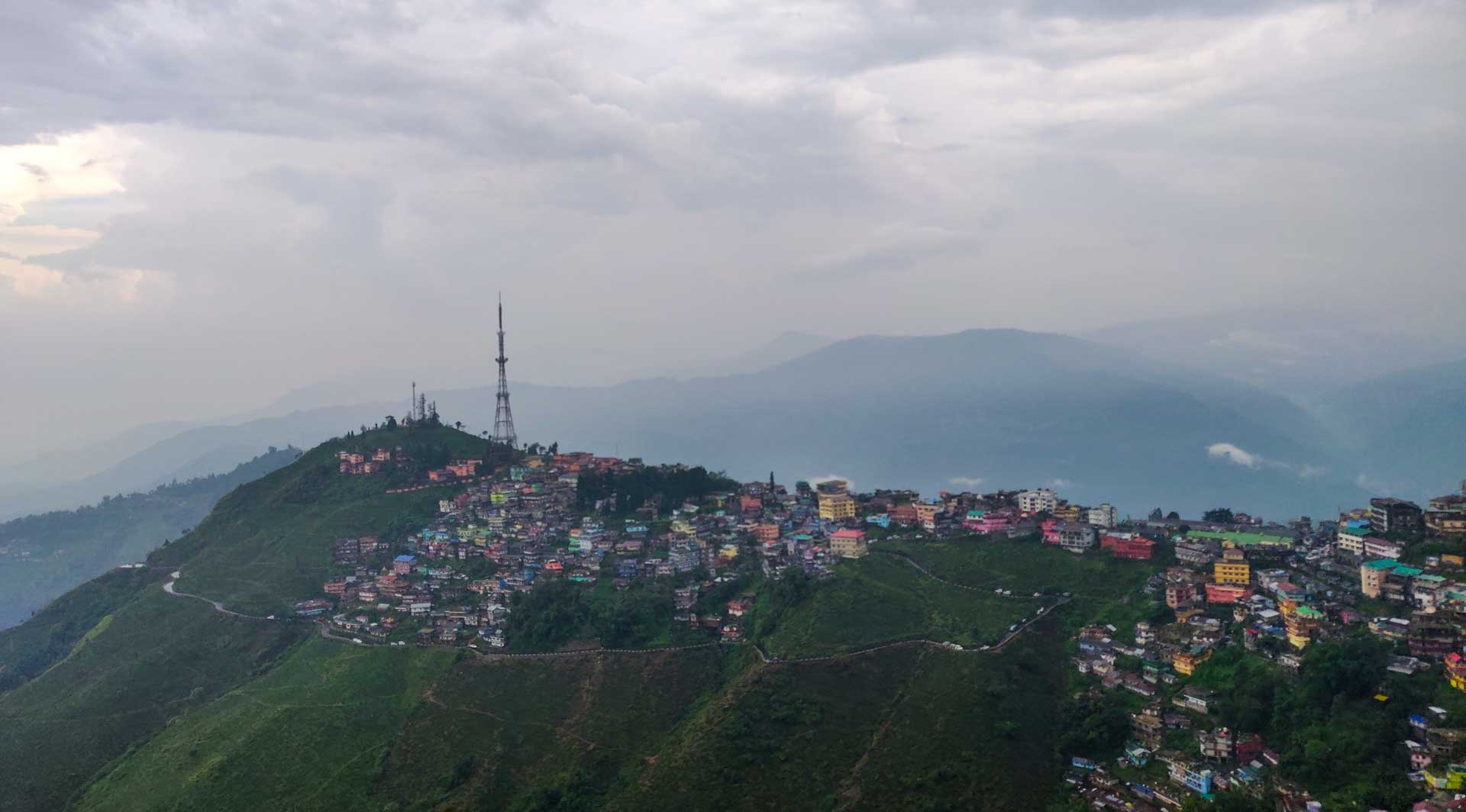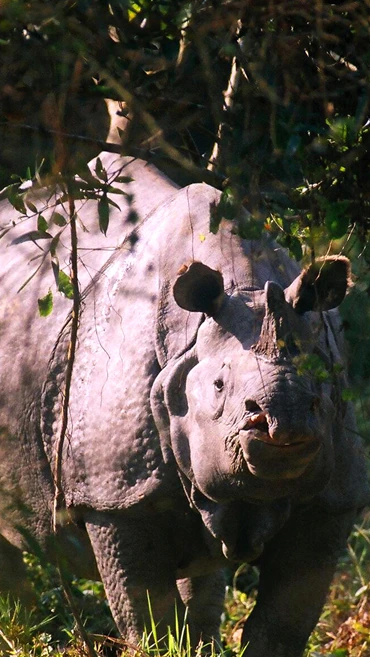Kurseong – The land of the white orchid
A Hill Town That Feels Like a Secret
Tucked into the mist-draped slopes between Siliguri and Darjeeling, Kurseong feels like a town that time forgot—in the best possible way. This serene, pine-scented hamlet is often overshadowed by its glitzy neighbour Darjeeling, but those who veer off the usual path quickly realise that Kurseong offers a more intimate, soulful experience of the Eastern Himalayas. With whispering forests, colonial-era schools, haunting legends, and some of the most iconic tea gardens in India, Kurseong isn’t just a stopover—it’s a destination in itself.
Where Is Kurseong
Perched at around 1,500 meters (approximately 4,900 feet) above sea level, Kurseong is a sub-divisional town in Darjeeling district. It is about 43 kilometres from both New Jalpaiguri (NJP) Railway Station and Bagdogra Airport, making it easily accessible by road in about 1.5 to 2 hours. The town enjoys a pleasant climate year-round, making it an ideal destination if you want to avoid both the tropical heat of the plains and the biting cold of higher-altitude hill stations.
Kurseong is a brilliant choice for:
-
Families seeking a peaceful hill retreat
-
European travellers looking for cultural depth and heritage
-
Tea lovers and nature enthusiasts
-
Couples and solo travellers exploring offbeat North Bengal
The Name
Kurseong’s poetic nickname, “The Land of White Orchids,” has roots in Lepcha folklore. The Lepchas, the earliest known inhabitants of this region, referred to the area as “Kurson-Rip,” meaning “white orchids,” which still bloom on the verdant hillsides. The local pronunciation—Khorsang—is still widely used.
The History Etched in Pines and Stone
Kurseong’s history is anything but ordinary. Long before the British arrived, the area was part of the Kingdom of Sikkim, with occasional control by Nepal. In 1835, the British East India Company leased it from the Chogyal of Sikkim, alongside Darjeeling, to develop a sanatorium for colonial officers. It soon became a favoured summer retreat, with sanatoriums and colonial bungalows dotting the landscape.
By 1879, Kurseong had municipal status and quickly grew as an educational and medical hub. Even literary and political giants were drawn to its serenity—Rabindranath Tagore is believed to have penned verses here, while Netaji Subhas Chandra Bose stayed in Giddapahar in 1936. His residence is now a preserved heritage site.
Getting to Kurseong – Choose Your Route
Whether you’re flying into Bagdogra or arriving by train at NJP, reaching Kurseong is part of the adventure.
The three major routes are:
1. Hill Cart Road (NH-110): The most scenic drive with jaw-dropping views of the Himalayan foothills. It’s the longest, but worth it if you enjoy winding mountain roads.
2. Pankhabari Road: The oldest route, now slightly tamed but still steep and best for confident drivers. One-way regulations may apply, so check before travel.
3. Rohini Road: The fastest and smoothest option, popular with most travellers. A small toll applies, but the quick access to Kurseong makes it worthwhile.
Our travel experts at NBTT Travel Solution can guide you on the best route based on the weather and your travel preferences. Call 9733300696 for a customised itinerary.
Tea Gardens, Mountain Views & Colonial Echoes – Things to Do in Kurseong
Explore World-Famous Tea Estates
No visit to Kurseong is complete without immersing yourself in its tea culture. Some of the most renowned Darjeeling tea estates lie here—Castleton, Makaibari, and Ambootia. Many estates offer guided tours and tasting sessions. Walking among the manicured tea bushes with snow-capped peaks in the background is a sensory experience you won’t forget.
Makaibari, in particular, is one of the oldest and most progressive tea estates in the world, with a strong focus on organic and sustainable practices. Staying in a Makaibari homestay is an excellent way to experience both the terroir and the warmth of local hospitality.
Eagle’s Craig Viewpoint
A short walk or drive from town brings you to Eagle’s Craig. Perched high on a cliff, it offers panoramic views of the plains below, including glimpses of Siliguri on a clear day. A memorial, Shahid Smarak, stands here to honour those who died during the 1988 Gorkhaland agitation.
While the setting is serene, the juxtaposition of historical memory with cell phone towers adds a surreal modern touch to the view. Visit in the late afternoon for golden-hour photography.
Dow Hill – Beauty with a Dash of Mystery
Dow Hill isn’t just another picnic spot—it’s a deeply atmospheric forest zone with a Victorian past and ghostly reputation. Legend calls it one of the most haunted places in India. Here, you’ll find:
-
Dow Hill Eco Park and Deer Park, once home to free-roaming deer
-
The Forest Museum, documenting the local flora and fauna
-
Haunted corridors of Victoria Boys’ School and Dow Hill Girls’ School
It’s spooky, yes, but also stunning—pine forests, winding paths, and crisp mountain air make it a must-visit.
Giddapahar – History & Himalayan Vistas
This southeastern stretch of Kurseong features:
-
The Netaji Subhas Chandra Bose Museum, set in his family residence
-
Seti Mata Temple, a cave temple dedicated to Goddess Durga
-
Giddapahar Viewpoint, with jaw-dropping views of the Eastern Himalayas
It’s a meditative place that connects India’s political legacy with its spiritual pulse.
St. Mary’s Hill and The Grotto
For quiet contemplation, head north to St. Mary’s Hill. A statue of the Virgin Mary sits in a peaceful forest grotto, with a chapel nearby. It’s a beloved site for local Christians and visitors alike. The ambience is timeless, and the walk to the spot is just as refreshing as the destination itself.
Day Trips & Short Hikes – Offbeat Experiences Around Kurseong
If you're eager to step off the tourist trail:
-
Bhangzang Salamander Lake: Just 14 km from town, this lake is a sanctuary for one of the rarest salamander species. Preserved and promoted by local initiatives, it's ideal for nature lovers.
-
Old Cart Road to Dilaram: This stretch from Kurseong to Dilaram via Dow Hill and Chimney village offers incredible vistas. Perfect for a slow drive or an invigorating hike.
-
Chattakpur Forest Village: Beyond Dilaram, you’ll find this eco-village nestled deep in pine forests. It’s a hidden Himalayan retreat with rustic lodges and forest trails.
Where to Stay in Kurseong – From Colonial Charm to Tea Estate Luxury
Accommodation in Kurseong is as diverse as its landscape. Depending on your taste, you can stay in:
-
Taj Chia Kutir: Luxury redefined amidst tea gardens
-
Mayfair Jungpana: A posh escape with sweeping views
-
Hotel Alita: A reliable mid-range option
-
The Cochrane Place: A heritage hotel with British-era charm and mountain views
West Bengal Tourism’s lodge on the highway is another solid pick, serving hearty meals and providing comfortable rooms at fair prices.
New-age boutique resorts and homestays have popped up along the Old Cart Road and Giddapahar stretch, blending local warmth with traveller convenience.
For a seamless booking experience, or if you want to mix your Kurseong visit with a broader Darjeeling Hills itinerary, just give NBTT Travel Solution Private Limited a call at 9733300696. Our local travel experts are ready to tailor your perfect hill holiday.
Food & Local Flavours – What to Eat in Kurseong
Kurseong’s food scene is a delicious intersection of Bengali, Nepali, and Tibetan influences. From steaming momos at roadside stalls to hearty thalis and fresh bakes at The Cochrane Place, the town’s small eateries and cafés surprise with flavour.
Don't miss:
-
Local thukpa and noodle soups
-
Freshly brewed Darjeeling tea at source
-
Homemade pickles and jams from tea estate kitchens
-
Seasonal delights like local mushrooms and fiddlehead ferns
Plan Your Kurseong Escape Today
Kurseong is not just a place to visit—it’s a place to feel. Whether you’re an Indian family looking for a refreshing retreat or a European traveller chasing heritage and mountain trails, Kurseong offers a unique blend of charm, calm, and character.
To plan your Kurseong holiday, contact NBTT Travel Solution Private Limited at 9733300696 for expert advice, personalised packages, and local support.
For Booking or Query
Contact Us
Query Form
North-Bengal.com
Siliguri Office - 19 MN Sarkar Road, Siliguri, West Bengal - 734001 Siliguri, State : West Bengal, Country : India. PIN : 734001
info@north-bengal.com

